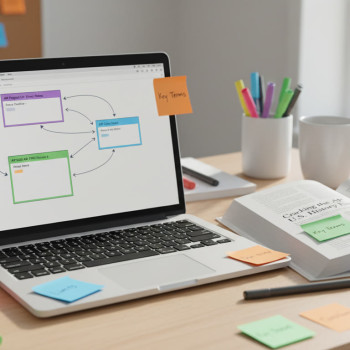Why Smart Budgeting for AP Materials Matters
As a parent, you want two things for your child: the confidence to walk into their AP exam and the peace of mind that you didn’t overspend on things that don’t move the needle. Preparing for Advanced Placement exams can feel like a minefield of expensive prep books, online subscriptions, practice tests, and software tools promising guaranteed score gains. But the truth is simpler: a mix of the right books, targeted practice, and a few smart tech tools — all chosen with a plan — gives you the best results for your dollars.

Overview: Three Buckets That Drive Score Improvement
Think of AP prep spending as three buckets: Books, Practice (tests and question banks), and Software (apps, learning platforms, and analytics). Each bucket serves a different purpose:
- Books give structure, subject depth, and review walls to lean on.
- Practice (real AP-style questions and full-length tests) builds stamina, timing, and familiarity with question formats.
- Software can personalize study, track progress, and fill gaps efficiently.
When you budget wisely across these three, you create a balanced plan that supports understanding, skill-building, and smart, data-driven improvements.
Step 1: Start With a Needs Assessment (Free or Cheap)
Before buying anything, take stock. Ask: What’s my child’s current level? What score do they need for college credit or placement? Which AP subject(s) are they taking? You don’t need a paid assessment to begin—many schools, teachers, and free online resources let students take a diagnostic or practice test to reveal strengths and gaps.
- Priority: Find the topics where a small amount of targeted work yields large gains.
- Time vs. Money Trade-off: If your student has many hours to study, cheaper resources plus discipline can outperform expensive tech. If time is short, targeted paid tools can accelerate progress.
Practical Triage Questions to Guide Spending
- Is the baseline understanding weak (lots of new concepts) or mostly review?
- Does the student struggle with multiple-choice timing, or with free-response structure and content?
- Are they self-motivated, or do they need external structure and accountability?
Step 2: Books — Where to Spend and Where to Save
High-quality books still form the backbone of AP prep. But not all books are equal, and you don’t need a library for one AP subject. Here’s how to allocate book spending effectively.
Must-Have: One Core Review Book
Select one well-regarded review book that matches the student’s learning style. For many subjects, a single comprehensive review edition will give content summaries, worked examples, and a set of practice questions. This is a high-impact purchase because it becomes the study anchor.
Nice-to-Have: Topic-Specific Supplements
Only buy supplemental titles for topics where the diagnostic shows gaps—e.g., a focused guide on AP Calculus AB integration techniques, or an AP English Language essay anthology for rhetorical strategies. These are effective when used selectively.
Skimpable: Test-Heavy Compendiums
Full collections of dozens of proprietary practice exams can be pricey yet redundant. Instead, favor a few high-quality full-length practice tests and use official released exams when possible.
Step 3: Practice Tests — The Greatest Value
Practice tests are the most cost-effective way to improve scores. They deliver actionable intelligence: timing, recurring mistakes, and score-trend signals. Prioritize realistic full-length exams and real AP-style free-response prompts.
How Many Practice Tests Are Enough?
- Diagnostic: 1 full-length to set baseline.
- During Prep: 1 full-length every 1–2 weeks during the intense 6–8 week ramp-up.
- Final: 2–3 timed rehearsals in the final 2 weeks, simulating test conditions (wake time, breaks, allowed materials).
That might be 6–10 full-lengths over a semester—less if the student is only polishing timing or a lot more if they are learning content.
Free and Low-Cost Sources
Use released AP questions and free school-provided practice where available. Many libraries and schools also circulate reliable practice resources. The point: don’t pay for every test when many realistic options are free or inexpensive.
Step 4: Software and Apps — When They Pay Off
Software tools can offer personalization, progress tracking, and targeted drills that books can’t. But subscriptions add up. Treat them like power tools: excellent when used purposefully, wasteful otherwise.
When to Invest in Software
- Short timeline: When the student has limited time and needs rapid, focused gains.
- Specific weaknesses: When adaptive drills can repeatedly target weak skill clusters (e.g., ECG patterns in AP Biology or syntactic analysis in AP English Literature).
- Data-driven feedback: When you want objective insights into pacing and recurring error patterns.
How to Avoid Subscription Overload
Buy one month, test whether the student uses it daily and sees improvement, then cancel or switch. Many platforms let you buy monthly rather than annual access—use short trials to evaluate ROI.
Step 5: Tutoring — The Multiplier Effect
One-on-one tutoring can dramatically accelerate progress by cutting straight to the student’s needs: explaining tricky concepts, modeling free-response scoring, and offering accountability. It’s the priciest option per hour, but when used strategically it multiplies the value of every book and practice exam purchased.
How Tutoring Fits Into a Budget
- Targeted, short-term tutoring (8–12 sessions) aimed at exam skills and weak topics often outperforms open-ended weekly sessions.
- Use tutors for higher-order practice: essay review, test-taking strategy, or conceptual glue work that a book won’t resolve.
For families considering a tutoring partner, services like Sparkl’s personalized tutoring offer 1-on-1 guidance, tailored study plans, expert tutors, and AI-driven insights that help focus sessions where they matter most. When tutoring aligns with diagnostic data and practice test feedback, the investment pays off faster.
Budgeting Template: How Much to Allocate
Your budget will depend on the student’s starting point and goals. Below is a practical allocation framework you can adapt. These are proportions of a hypothetical total AP prep budget — use actual dollars that fit your family.
| Bucket | Percentage of Budget | Why |
|---|---|---|
| Core Review Book | 20% | Provides structured content review and examples; one reliable edition is often enough. |
| Practice Tests and Question Banks | 35% | High ROI — realistic practice reveals weaknesses and builds stamina. |
| Software/Subscriptions | 20% | Personalization and analytics, useful when time-limited or targeting specific gaps. |
| Tutoring (Occasional) | 20% | High impact for targeted skill work and essay feedback; use short, focused engagements. |
| Miscellaneous (supplies, workshop) | 5% | Flashcards, calculator battery, printing practice exams — small but necessary items. |
Example Dollar Breakdown
If you set a $500 budget per AP subject (a sensible mid-range example):
- Core Book: $100
- Practice Tests/Question Banks: $175
- Software Subscriptions: $100
- Tutoring: $100 (short block or a few focused sessions)
- Miscellaneous: $25
Adjust upward or downward depending on subject complexity and the student’s goals (e.g., multi-subject or target 5 vs. aiming for a baseline passing score).
Maximizing Value: Practical Tips and Hacks
1. Borrow and Share
Check the school library, classroom teachers, or local library systems. Many AP teachers will loan review books or past tests. Sharing a core book among peers for initial review can save money as long as each student still gets sufficient practice time.
2. Buy Last Edition or Used
For many AP subjects, the core content doesn’t change dramatically year-to-year. You can often buy last year’s edition or a gently used copy for a fraction of the price.
3. Prioritize Official AP Materials
When possible, use released AP exam questions and sample free-response prompts; they’re the gold standard for authenticity and the best practice for real test conditions.
4. Schedule, Don’t Stockpile
Buy materials as you go. Start with the core book and a few practice exams; then purchase targeted supplements based on diagnostic results. This prevents buying things that won’t be used.
5. Bundle Wisely
Some publishers and vendors offer bundles (book + online question bank). Compare the exercises to the official style and resist bulk bundles that include excessive irrelevant drills.
Subject-Specific Considerations
Different AP subjects benefit from different investments. Below are quick heuristics for common APs.
AP Calculus
- High value: Practice exams, calculator-allowed strategy practice, and targeted sessions on problem-solving techniques.
- Lower priority: Multiple narrative review books; one strong review + practice is ideal.
AP English Language / Literature
- High value: Sample essays and targeted essay feedback (tutoring or teacher review), and reading high-quality model passages.
- Lower priority: Expensive software that doesn’t include real AP prompts.
AP Biology / Chemistry
- High value: Practice with data interpretation and lab-style questions; software that provides visualizations can help.
- Lower priority: Overly general science review books—choose AP-specific resources.
AP History / Social Sciences
- High value: Essay outlines, timed DBQ practice, and a reliable content-review book; flashcards for key dates, names, and concepts.
- Lower priority: Broad textbooks unless the student lacks foundational content knowledge.
Measuring Return on Investment
Budgeting isn’t just about cutting costs; it’s about evaluating which purchases lead to measurable improvements. Use these simple ROI checks:
- Before and after practice test scores — track raw score and timing changes.
- Reduction in the number of repeated mistakes on drills (e.g., fewer errors on certain algebraic manipulations or rhetorical device identification).
- Improved confidence and fewer last-minute cram sessions — softer but important signals.
When a resource yields clear, measurable gains on practice tasks, it’s worth keeping. When it doesn’t, cut it loose.
Creating a Lean, High-Impact 8-Week Plan
Here’s a practical timeline if your student has about two months before the exam:
- Week 1: Diagnostic full-length test and choose a core book. Set target score.
- Weeks 2–5: Focused content review (3–5 topical sessions per week) and weekly practice sections. Consider 2–4 short tutoring sessions to address persistent problems.
- Week 6: Ramp up full-length practice (one every 7–10 days). Review missed questions in depth.
- Week 7: Intensive timing practice, simulate testing conditions, edit essays with tutor/teacher.
- Week 8: Light review, 2 simulated tests early in the week, then taper to preserve energy.
This schedule lets you concentrate paid resources (tutoring sessions, a short software subscription) during the weeks where they yield the largest returns.
Final Thoughts — Make Every Dollar Count
Smart budgeting for AP prep is less about penny-pinching and more about strategic allocation. Begin with a diagnostic, invest first in a single solid review book, prioritize realistic practice tests, and use software and tutoring in short, targeted bursts when they will produce measurable gains. Borrow where you can, buy used when it makes sense, and always track whether a purchase improves performance on timed, realistic practice tasks.
Remember: learning is ultimately what creates score improvements, not the number of apps or books on a shelf. When you combine focused study with smart materials and occasional expert guidance, you get the best possible return on your investment.

If You Want a Simple Next Step
Start with a single diagnostic test this weekend, pick one core review book for the subject, and schedule two focused tutoring sessions or a one-month trial of a personalized platform. Track progress weekly. Small, measured steps protect your budget and build steady improvement.
Good luck — and remember, calm, organized preparation beats frantic last-minute spending every time. Your thoughtful support and smart choices will give your student the best chance to walk into exam day ready to perform.
Note: Strategic, personalized tutoring (like Sparkl’s model) can be scheduled for short, targeted blocks that align with this plan—helping prioritize concepts, improve free-response performance, and turn every practice test into learning opportunities.




















No Comments
Leave a comment Cancel